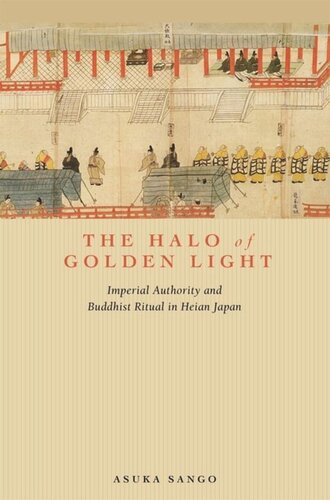

Most ebook files are in PDF format, so you can easily read them using various software such as Foxit Reader or directly on the Google Chrome browser.
Some ebook files are released by publishers in other formats such as .awz, .mobi, .epub, .fb2, etc. You may need to install specific software to read these formats on mobile/PC, such as Calibre.
Please read the tutorial at this link: https://ebookbell.com/faq
We offer FREE conversion to the popular formats you request; however, this may take some time. Therefore, right after payment, please email us, and we will try to provide the service as quickly as possible.
For some exceptional file formats or broken links (if any), please refrain from opening any disputes. Instead, email us first, and we will try to assist within a maximum of 6 hours.
EbookBell Team

4.1
10 reviewsIn this pioneering study of the shifting status of the emperor within court society and the relationship between the state and the Buddhist community during the Heian period (794–1185), Asuka Sango details the complex ways in which the emperor and other elite ruling groups employed Buddhist ritual to legitimate their authority. Although considered a descendant of the sun goddess, Amaterasu, the emperor used Buddhist idiom, particularly the ideal king as depicted in the Golden Light Sūtra, to express his right to rule. Sango’s book is the first to focus on the ideals presented in the sūtra to demonstrate how the ritual enactment of imperial authority was essential to justifying political power. These ideals became the basis of a number of court-sponsored rituals, the most important of which was the emperor’s Misai-e Assembly.
Sango deftly traces the changes in the assembly’s format and status throughout the era and the significant shifts in the Japanese polity that mirrored them. In illuminating the details of these changes, she challenges dominant scholarly models that presume the gradual decline of the political and liturgical influence of the emperor over the course of the era. She also compels a reconsideration of Buddhism during the Heian as “state Buddhism” by showing that monks intervened in creating the state’s policy toward the religion to their own advantage. Her analysis further challenges the common view that Buddhism of the time was characterized by the growth of private esoteric rites at the expense of exoteric doctrinal learning.
The Halo of Golden Light draws on a wide range of primary sources—from official annals and diaries written by courtiers and monks to ecclesiastical records and Buddhist texts—many of them translated or analyzed for the first time in English. In so doing, the work brings to the surface surprising facets in the negotiations between religious ideas and practices and the Buddhist community and the state.